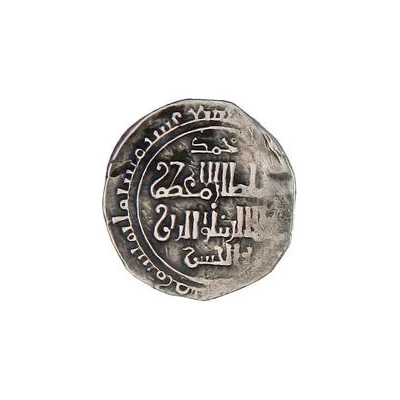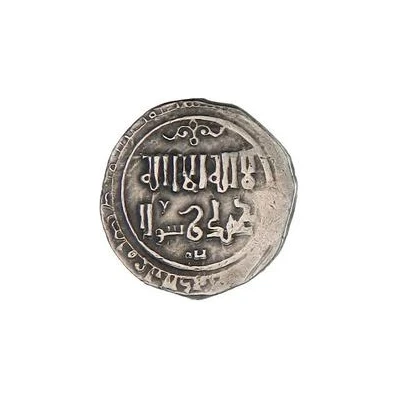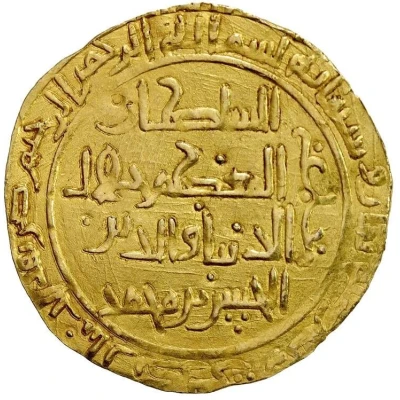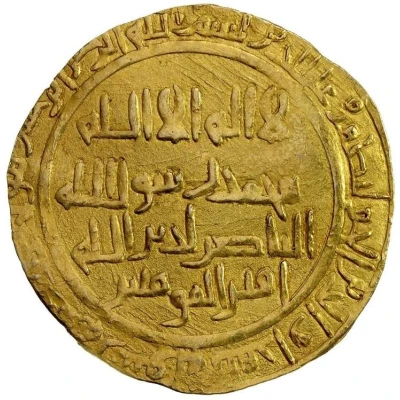


© Stephen Album Rare Coins
Dirham - 'Ala al-din Muhammad III ND
| Silver | 3.40 g | 19 mm |
| Issuer | Alamut State (Greater Iran) |
|---|---|
| Imam | Ala al-Din Muhammad III (1221-1255) |
| Type | Standard circulation coin |
| Years | 1221-1255 |
| Value | 1 Dirham (0.7) |
| Currency | Dinar (1090-1275) |
| Composition | Silver |
| Weight | 3.40 g |
| Diameter | 19 mm |
| Shape | Round (irregular) |
| Technique | Hammered |
| Demonetized | Yes |
| Updated | 2024-10-05 |
| Numista | N#81435 |
|---|---|
| Rarity index | 97% |
Reverse
Script: Arabic
Lettering:
Field
muhammad / [al-sultan] al-a‘zam / [‘ala] al-dunya wa’l-din / abu’l-hasan
Margin
bism (sic) duriba hadha … wa sittmi‘a
Translation:
Field:
Muhammad, the Supreme Sultan, Exalted of the World and the Faith, Abu’l-Hasan
Margin:
in the name, this ….. was struck ….. and six hundred.
Comment
The Isma‘ilis, living in their mountainous lands, were only a marginal power, who, as the Mongols gained strength, sought the support of their Shi‘a brethren.However, by the time ‘Ala al-Din Muhammad III ibn al-Hasan III came to the throne Shi‘ism was at a low ebb, and its adherents rejected the Isma‘ili imams for their unusual beliefs.
Now only the Abbasid caliphs in Baghdad and the Isma‘ilis tried to resist the Mongols, and in 650 H (1252 AD) Möngke, the grandson of Chingiz Khan, mounted an expedition against them led by his brother Hulagu. As they advanced on Rudbar from Mongolia the Mongols destroyed as many Isma‘ili fortresses as they could. ‘Ala al-Din ’s chief officers tried, unsuccessfully, to persuade him to reach an agreement with Hulagu, but he refused to do so.
At this, his son Rukn al-Din Khur-Shah was appointed his successor as imam, and Muhammad was to be set aside with Rukn al-Din as regent. Rukn al-Din was planning to negotiate with the Mongols, but he fell ill and while he was incapacitated Muhammad III was murdered by a former favourite.
Rukn al-Din tried to impose strict shari‘a law to conciliate the Sunnis, and offered the Mongols his submission. However, the Mongols were determined to destroy the Isma‘ili fortress of Alamut, and Hulagu rejected Rukn al-Din’s plea for it to be spared. To make matters worse, the Sunni Muslims encouraged the Mongols to exterminate the Isma‘ili people.
First the great library of Alamut was burned, and then followed a general massacre of the men, while the women and children filled the slave markets of Khurasan.
Rukn al-Din was dispatched to Mongolia, but was killed on his return journey. A son is said to have been hidden away, and it is he who carried on the Isma‘ili line, now headed by the Agha Khan.
Silver coins of the Isma‘ilis are very rare, and this one, which lacks some of its legends, is interesting in that it bears the Sunni, rather than the Shi‘ite kalima. With the situation Muhammad III faced this is hardly surprising, though he holds his own by naming himself, “Muhammad, the Supreme Sultan Exalted of the World and the Faith, Abu’l-Hasan".
Interesting fact
One interesting fact about this coin is that it was issued during the reign of 'Ala al-din Muhammad III, who was the ruler of the Alamut State, a Nizari Ismaili state that existed in what is now Iran and Syria, during the 13th century. The Alamut State was known for its strong military and its use of assassination as a political tool, earning it a reputation as a powerful and feared state in the region. The coin itself is made of silver and weighs 3.40 grams, indicating that it was a significant denomination in the currency system of the time.

